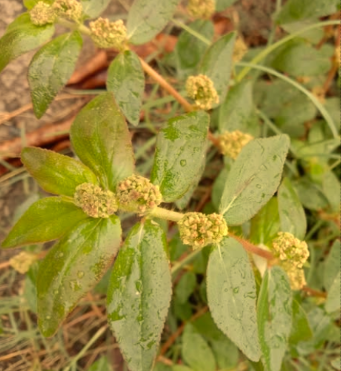Euphorbia hirta—better known as the asthma plant—is a modest-looking herb with a surprisingly long list of uses in traditional medicine. For generations, people have turned to it as a homemade treatment for everything from breathing troubles to stomach upsets. In this guide, we’ll explore how it’s been used for centuries, how people prepare it, and what modern science has to say about its potential benefits.
Respiratory Relief and Asthma Support
One of Euphorbia hirta’s most well-known roles is in treating asthma and other respiratory conditions like bronchitis and stubborn coughs. In traditional practice, the leaves are brewed into tea or simmered into a decoction, which is believed to help open up the airways and relax bronchial muscles. While it’s not a replacement for medications for asthma or professional asthma and breathing treatments, some people still use it for asthma treatment as part of their herbal regimen—always in consultation with a health care professional.
Digestive Health and Inflammation
Euphorbia hirta is also valued for digestive relief, particularly for its potential to calm diarrhea and dysentery. The decoction is thought to reduce intestinal spasms, making it a traditional remedy for treating bowel inflammation and easing symptoms of irritable bowel syndrome (IBS).
Skin Healing and Topical Care
Applied externally, the plant has been used for centuries on warts, boils, rashes, and even small wounds. A paste made from its leaves, or a skin infusion, is believed to offer antimicrobial and anti-inflammatory benefits—perfect for soothing irritation naturally.
Antimicrobial Potential
Known in herbal circles for its wide-ranging antimicrobial action, Euphorbia hirta has been used against bacterial, fungal, and viral issues. Whether taken internally or applied to the skin, these uses are still rooted mainly in tradition, with scientific research gradually catching up.
Pain and Inflammation Relief
Thanks to its analgesic and anti-inflammatory qualities, Euphorbia hirta has been turned to for easing arthritis discomfort, muscle strains, and headaches. Traditionally, the remedy comes as either a warm tea or a topical poultice.
Fever Management
Across many cultures, Euphorbia hirta is sipped as a fever-lowering tea. While it’s not a substitute for modern medicine, traditional healers believe it can have a cooling effect during fevers.
Urinary Health and Tract Relief
Beyond respiratory and digestive uses, Euphorbia hirta has a place in urinary health remedies. It’s traditionally believed to act as a diuretic, encouraging urine flow, which may assist with urinary tract relief by helping to flush out bacteria. These applications are anecdotal, so it’s best to consult a health care professional before trying it for urinary issues.
Antioxidant Possibilities
With antioxidants being such a hot topic, Euphorbia hirta’s potential to fight oxidative stress has sparked curiosity. If validated, this could have implications for long-term wellness and prevention of chronic disease.
How People Traditionally Prepare It
Most often, Euphorbia hirta is enjoyed as a tea or decoction—fresh or dried leaves boiled in water, strained, and sipped. For skin use, the leaves are crushed into a paste or steeped for topical application. These methods are part of homemade treatment traditions, but dosages vary by culture and purpose.
Use with Caution
While the plant has an impressive history, it isn’t without risks. Some parts may be toxic in large amounts, and interactions with medicines—especially medications for asthma—are possible. Pregnant or breastfeeding individuals, or those with chronic health conditions, should always check with a health care professional before use.
Final Thoughts
Euphorbia hirta has a fascinating range of traditional applications—from asthma and treatment to digestion, urinary health, and skin care. But just like with any herbal remedy, it’s best to use it alongside—not instead of—modern care such as breathing treatments for asthma and other prescribed therapies. By approaching it with respect, curiosity, and proper guidance, you can explore its potential while keeping your health in safe hands.

